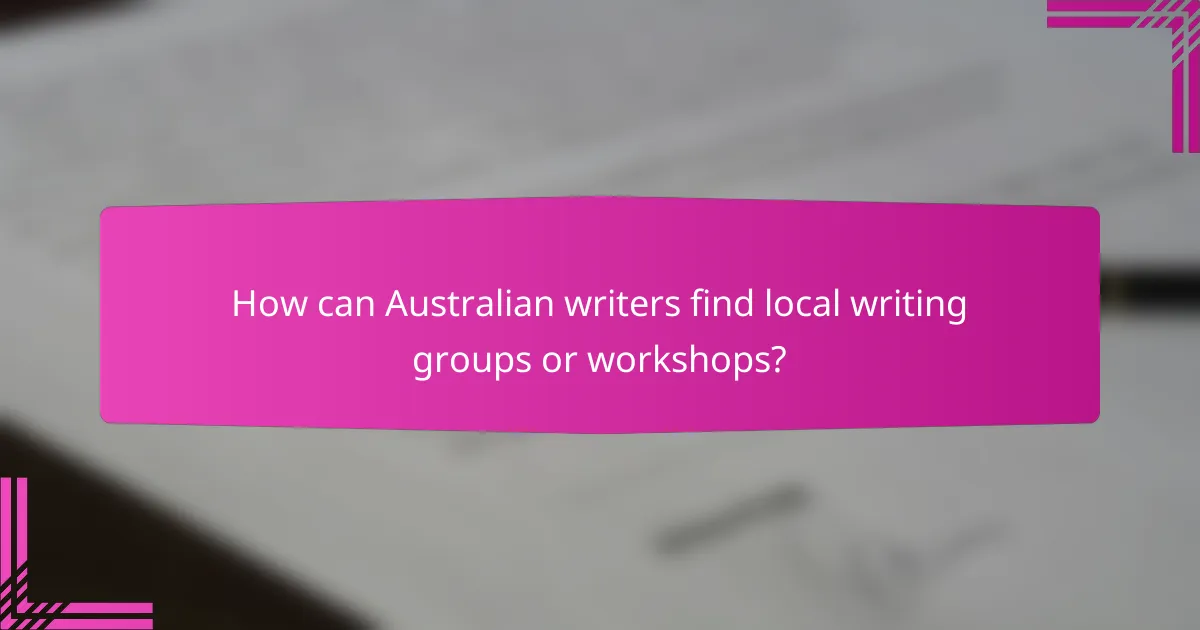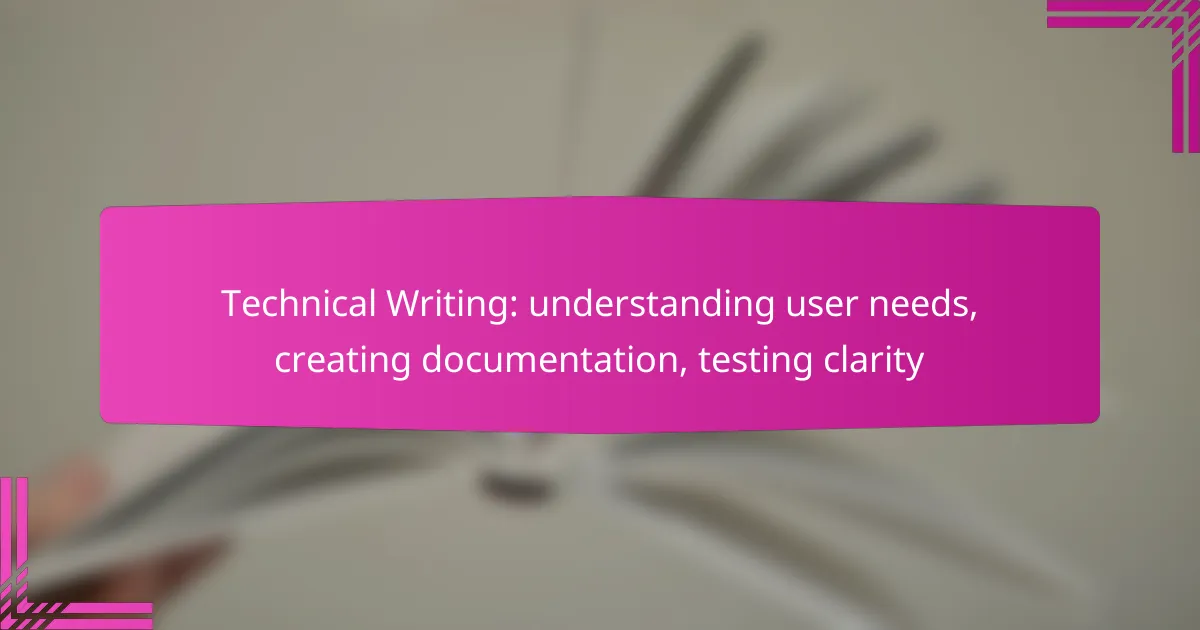Creative writing thrives on the interplay of free writing exercises, brainstorming, and meticulous editing. These practices not only spark inspiration and generate fresh ideas but also refine drafts into polished pieces. By embracing these techniques, writers can enhance their skills and overcome creative obstacles, leading to more compelling narratives.

What are effective free writing exercises for creative writers in Australia?
Effective free writing exercises for creative writers in Australia include techniques that stimulate creativity and enhance writing skills. These exercises can help writers overcome blocks, generate ideas, and refine their drafts through various engaging methods.
Stream of consciousness writing
Stream of consciousness writing involves jotting down thoughts as they flow, without worrying about grammar or structure. This technique allows writers to tap into their subconscious, revealing ideas and emotions that may not surface through traditional writing methods.
To practice, set a timer for 10-15 minutes and write continuously about any topic that comes to mind. Avoid self-editing; the goal is to let your thoughts flow freely. This can lead to unexpected insights and creative breakthroughs.
Timed writing prompts
Timed writing prompts challenge writers to produce a piece of work within a set timeframe, usually ranging from 5 to 20 minutes. This exercise encourages quick thinking and spontaneity, helping writers to bypass their inner critic.
Choose a prompt, such as “Write about a secret,” and start writing as soon as you begin the timer. Once the time is up, review what you’ve written. This can serve as a foundation for further development or editing.
Character development exercises
Character development exercises focus on creating detailed profiles for characters in your stories. This can include their backgrounds, motivations, and relationships, which helps writers understand their characters better.
Try creating a character sheet with sections for physical traits, personality, and backstory. You might also write a scene from the character’s perspective to explore their voice and emotions. This deepens your connection to the character and enriches your narrative.
Word association games
Word association games stimulate creativity by encouraging spontaneous connections between words. This exercise can help writers break out of rigid thinking patterns and discover new ideas.
Start with a random word and write down the first five words that come to mind in response. Use these associations as inspiration for a story or poem. This technique can lead to unexpected themes and plot twists.
Visual inspiration techniques
Visual inspiration techniques involve using images or art to spark creativity. This can include browsing through photographs, paintings, or even collages that resonate with your writing themes.
Choose an image that intrigues you and write a short story or scene based on it. Consider the emotions it evokes and the narrative possibilities it presents. This method can help you visualize settings and characters more vividly, enhancing your overall writing.

How can brainstorming ideas enhance creative writing?
Brainstorming ideas can significantly enhance creative writing by generating a wealth of concepts and perspectives. This process encourages writers to explore diverse themes and narratives, ultimately enriching their work.
Mind mapping techniques
Mind mapping is a visual brainstorming technique that helps writers organize their thoughts and ideas. By creating a diagram that connects related concepts, writers can see the relationships between different elements of their story or theme. This method fosters creativity by allowing for non-linear thinking and exploration of various plot lines or character arcs.
To create an effective mind map, start with a central idea and branch out with related thoughts. Use colors and images to make it visually engaging, which can stimulate further creativity. Remember to keep it flexible; ideas can evolve as you write.
Collaborative brainstorming sessions
Collaborative brainstorming sessions involve gathering a group of writers or creative individuals to share and develop ideas together. This method leverages the collective creativity of the group, often leading to unexpected insights and innovative concepts. Engaging with others can challenge your thinking and push you to explore new directions.
To run an effective session, establish clear goals and create a supportive environment where all participants feel comfortable sharing. Use techniques like round-robin idea sharing or open discussions to maximize participation. Be sure to document all ideas for future reference.
Using writing prompts
Writing prompts are specific scenarios or phrases designed to inspire creativity and overcome writer’s block. They can range from a single sentence to a detailed scenario, providing a starting point for your writing. Prompts can help you explore different genres, styles, or themes that you might not have considered otherwise.
To utilize writing prompts effectively, choose ones that resonate with you or challenge your usual writing habits. Set a timer for a short period, such as 10 to 15 minutes, and write continuously without self-editing. This approach encourages spontaneity and can lead to surprising ideas.
Idea journals
An idea journal is a dedicated space for writers to capture thoughts, observations, and inspiration as they arise. Keeping an idea journal helps you document fleeting ideas that might otherwise be forgotten, serving as a valuable resource for future projects. This practice encourages regular reflection and creativity.
To maintain an effective idea journal, write regularly and freely without worrying about structure or grammar. You can include sketches, quotes, or snippets of dialogue. Review your entries periodically to identify recurring themes or concepts that could be developed into larger works.

What are the best practices for editing drafts?
Effective editing of drafts involves a systematic approach that enhances clarity, coherence, and overall quality. Key practices include self-editing, engaging in peer reviews, utilizing editing software, and reading aloud to identify issues.
Self-editing strategies
Self-editing is crucial for refining your draft before sharing it with others. Start by taking a break after writing to gain fresh perspective, then review your work for clarity, structure, and grammar. Focus on one aspect at a time, such as content flow or sentence structure, to avoid feeling overwhelmed.
Consider creating a checklist of common errors, such as passive voice usage or repetitive phrases, to streamline your editing process. This can help you systematically address issues without missing critical elements.
Peer review processes
Peer reviews provide valuable feedback that can enhance your draft’s quality. Share your work with trusted peers who can offer constructive criticism and different perspectives. Aim for a diverse group to gain insights from various viewpoints.
Establish clear guidelines for feedback, such as focusing on specific areas like character development or plot coherence. This will help reviewers provide targeted suggestions that are easier to implement.
Using editing software tools
Editing software tools can significantly aid in the editing process by identifying grammatical errors and suggesting improvements. Popular options include Grammarly, ProWritingAid, and Hemingway Editor, which offer various features tailored to different writing needs.
While these tools are helpful, they should not replace human judgment. Always review suggestions critically, as software may not fully understand context or nuances in your writing.
Reading aloud for clarity
Reading your draft aloud is an effective technique for spotting awkward phrasing and unclear passages. Hearing your words can highlight issues that may not be obvious when reading silently, such as rhythm and pacing.
Try to read at a natural pace and listen for any sections that feel off or difficult to follow. This practice can also help you identify areas where additional transitions or explanations may be needed for better flow.

What criteria should be considered when selecting writing exercises?
When selecting writing exercises, consider factors such as your skill level, personal interests, and the time you can dedicate. These criteria help ensure that the exercises are both effective and enjoyable, leading to better writing outcomes.
Skill level assessment
Assessing your skill level is crucial for choosing appropriate writing exercises. Beginners may benefit from structured prompts and guided activities, while more advanced writers might seek challenges that push their creativity and technique. A simple way to gauge your level is to reflect on the complexity of your previous writing projects.
Consider starting with exercises that match your current abilities, then gradually increase the difficulty. For example, if you can write short stories comfortably, try tackling longer narratives or experimenting with different genres.
Personal interest alignment
Your personal interests should align with the writing exercises you choose to maintain motivation and engagement. If you enjoy fantasy, seek exercises that encourage world-building or character development in that genre. Conversely, if you prefer non-fiction, focus on exercises that enhance research and factual writing skills.
To find exercises that resonate with you, list your favorite topics or themes and seek prompts related to them. This alignment not only makes writing more enjoyable but also fosters deeper exploration of subjects you are passionate about.
Time commitment evaluation
Evaluating the time you can commit to writing exercises is essential for maintaining consistency. Some exercises may only require a few minutes, while others could take hours or even days to complete. Be realistic about your schedule and choose exercises that fit within your available time.
A good practice is to set aside specific time blocks for writing, whether it’s 15 minutes daily or a couple of hours weekly. This helps create a routine and ensures that you can regularly engage with your writing without feeling overwhelmed.

How can Australian writers find local writing groups or workshops?
Australian writers can discover local writing groups or workshops through various channels, including online platforms, community resources, and educational institutions. Engaging with these groups can enhance writing skills, provide feedback, and foster a sense of community among writers.
Online community platforms
Online platforms such as Meetup, Facebook Groups, and local forums are excellent resources for finding writing groups in Australia. Writers can search for specific interests, such as fiction, poetry, or screenwriting, and join groups that match their preferences.
Additionally, websites like Scribophile and Wattpad offer opportunities to connect with other writers, share work, and receive critiques. These platforms often host virtual workshops and writing challenges, making them accessible regardless of location.
Local libraries and bookstores
Many local libraries and independent bookstores in Australia host writing groups and workshops. Checking the events calendar on their websites or visiting in person can reveal scheduled meetings and writing events. Libraries often provide free access to resources and sometimes even offer writing courses.
Participating in these local gatherings can help writers network with others in their community and gain valuable insights from experienced authors. It’s advisable to inquire about membership requirements or fees, as some groups may have specific guidelines.
University writing programs
Universities across Australia frequently offer writing programs and workshops open to the public. These programs can range from short courses to more extensive workshops led by experienced instructors. Writers can benefit from structured feedback and professional guidance in these settings.
Many universities also have community outreach initiatives that include writing groups. Checking with local institutions can provide information on upcoming events, costs, and enrollment options. Engaging with university programs can enhance a writer’s skills and expand their professional network.



